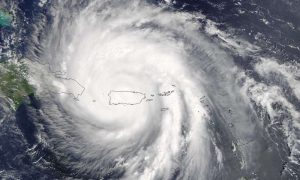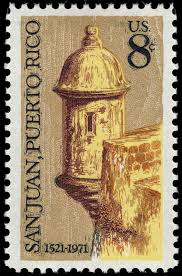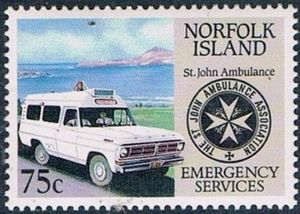Part Twenty Six. Because Puerto Rico’s death toll from 2017’s Hurricane is a metric of economic development, newspapers pressured to increase the numbers. For the readers’ convenience, this column of May 29, 2018 is a sample.
 UTopiAH. 64 death certificates or 2,975 deaths from a survey? This is Part 26 of a series for comparing life expectancy, because death rates are the new metric of economic development. Included are medical conditions ranking Utah’s #1 for health. When nose counts didn’t give the larger answer wanted, the pressure was on to turn to surveys, sampling one in 700, and expanding out to the desired conclusion Where should a memorial be built listing names from the Puerto Rico Hurricane?
UTopiAH. 64 death certificates or 2,975 deaths from a survey? This is Part 26 of a series for comparing life expectancy, because death rates are the new metric of economic development. Included are medical conditions ranking Utah’s #1 for health. When nose counts didn’t give the larger answer wanted, the pressure was on to turn to surveys, sampling one in 700, and expanding out to the desired conclusion Where should a memorial be built listing names from the Puerto Rico Hurricane?
- Part Twenty Six. Because Puerto Rico’s death toll from 2017’s Hurricane is a metric of economic development, newspapers pressured to increase the numbers. For the readers’ convenience, this column of May 29, 2018 is a sample.
 Backstory. In September 2017, two Hurricanes moved, hit, drowned over Puerto Rico. Storms, disasters, commotion bring eyes to the media, boosting ratings. The worse the disaster the better the coverage. Hurricanes destroy by a sea surge, flying debris, and tornadoes. Being warned, the Puerto Ricans population of just under four and a half million sought shelter. Power was lost, homes destroyed, roads blocked. In the weeks afterward, physicians certified 64 storm deaths caused by the storms sea surge, drowning and being struck by wind debris. Each death certificate was completed by a coroner, with name, gender, description, date, and cause of death. In 2015 28,085 deaths in Puerto Rico were reported on death certificates. See Part 25 for the breakdown of causes in 2015. Unsatisfied, hoping or expecting more deaths, media demanded and pushed for an increase in storm deaths count. In response to the political pressure, the government of Puerto Rico ordered a fresh report. Over the next year, in order to increase the count, the definition for Puerto Rican storm deaths were broadened beyond wind and water, to include suicides, sepsis, dialysis, diabetes, heart attack, and medicine. Of necessity, Puerto Rico’s coroners were declared incompetent to complete death certificates. Also, rather than use the newly incompetent death certificates, each with a deceased’s name, new statistical surveys were used by sampling one in six hundred households, and then multiplying the results by six hundred. No individual names, individual genders or causes, but a new an higher count. The 2018 statistical survey listed storm deaths at 2,975, an accuracy not supported by significant numbers in the survey. The conclusion noted that deaths are a metric of economic activity, and that the increase in storm deaths was due, not to drowning or debris striking, but to failure of the health system, missing doctors, missing ambulances, missing electrical and utility grid. The missing doctors were not due to a failure of the emergency response, but to generations of failure to train doctors, restrictions on medical school seats. Note no one complained about an absence of lawyers, because law schools annually graduate three times the lawyers as medical schools graduate physicians. Likewise no mention regrets a shortage of insurance salesmen, car dealers, handy-men, or other vocations, just health care.
Backstory. In September 2017, two Hurricanes moved, hit, drowned over Puerto Rico. Storms, disasters, commotion bring eyes to the media, boosting ratings. The worse the disaster the better the coverage. Hurricanes destroy by a sea surge, flying debris, and tornadoes. Being warned, the Puerto Ricans population of just under four and a half million sought shelter. Power was lost, homes destroyed, roads blocked. In the weeks afterward, physicians certified 64 storm deaths caused by the storms sea surge, drowning and being struck by wind debris. Each death certificate was completed by a coroner, with name, gender, description, date, and cause of death. In 2015 28,085 deaths in Puerto Rico were reported on death certificates. See Part 25 for the breakdown of causes in 2015. Unsatisfied, hoping or expecting more deaths, media demanded and pushed for an increase in storm deaths count. In response to the political pressure, the government of Puerto Rico ordered a fresh report. Over the next year, in order to increase the count, the definition for Puerto Rican storm deaths were broadened beyond wind and water, to include suicides, sepsis, dialysis, diabetes, heart attack, and medicine. Of necessity, Puerto Rico’s coroners were declared incompetent to complete death certificates. Also, rather than use the newly incompetent death certificates, each with a deceased’s name, new statistical surveys were used by sampling one in six hundred households, and then multiplying the results by six hundred. No individual names, individual genders or causes, but a new an higher count. The 2018 statistical survey listed storm deaths at 2,975, an accuracy not supported by significant numbers in the survey. The conclusion noted that deaths are a metric of economic activity, and that the increase in storm deaths was due, not to drowning or debris striking, but to failure of the health system, missing doctors, missing ambulances, missing electrical and utility grid. The missing doctors were not due to a failure of the emergency response, but to generations of failure to train doctors, restrictions on medical school seats. Note no one complained about an absence of lawyers, because law schools annually graduate three times the lawyers as medical schools graduate physicians. Likewise no mention regrets a shortage of insurance salesmen, car dealers, handy-men, or other vocations, just health care.
Puerto Rico’s Hurricane Maria Death Toll Could Exceed 4,000, New Study Estimates
By Sheri Fink May 29, 2018
As hurricane season begins this week, experts are still trying to count the number of deaths caused by last year’s devastating Hurricane Maria in Puerto Rico. The latest estimate: roughly 4,600, many of them from delayed medical care.
Residents of Puerto Rico died at a significantly higher rate during the three months after the hurricane than they did in the previous year, according to the results of a new study by a group of independent researchers from Harvard T.H. Chan School of Public Health and other institutions.
The researchers say their estimate, published Tuesday in The New England Journal of Medicine, remains imprecise, with more definitive studies still to come. But the findings, which used methods that have not been previously applied to this disaster, are important amid widespread concerns that the government’s tally of the dead, 64, was a dramatic undercount.
Winds, flooding and landslides swept away homes and knocked out power, water and cellular service, which remained largely unrepaired for months.
An analysis of vital statistics by The New York Times last December found that 1,052 more people than usual died across the island in the 42 days after the storm. Other news organizations, including Puerto Rico’s Center for Investigative Journalism, CNN, Buzzfeed and Alexis Raúl Santos, a demographer at Penn State, have also challenged the government’s figure, finding evidence for hundreds of excess deaths in the weeks after the hurricane.
Researchers for this latest study visited more than 3,000 residences across the island and interviewed their occupants, who reported that 38 people living in their households had died between Sept. 20, when Hurricane Maria struck, and the end of 2017. That toll, converted into a mortality rate, was extrapolated to the larger population and compared with official statistics from the same period in 2016.
Because the number of households surveyed was relatively small in comparison to the population’s size, the true number of deaths beyond what was expected could range from about 800 to more than 8,000 people, the researchers’ calculations show. The toll exceeded previous estimates, researchers said, in part because they looked at a longer time period.
About 15 percent of the people interviewed reported that someone in their household was unable to get medicines for at least a day after the storm. Roughly 10 percent said that a household member had trouble using breathing equipment, which often relies on electricity. Fewer than 10 percent reported closed medical facilities and 6 percent said doctors were unavailable. The study estimates that about a third of the deaths were caused by a delay in medical care or the inability to obtain it.
Under pressure, the government announced in December that all deaths that occurred after Maria hit would be reviewed and that people who died either directly or indirectly from the storm and its aftermath would be included in a revised tally. The government commissioned a review by researchers at the Milken Institute School of Public Health at the George Washington University, who had promised an initial report in May. But that analysis has barely begun. “They’re still acquiring data,” said Dr. Lynn R. Goldman, the school’s dean. The study will use the territory’s vital records and information from funeral homes, the medical system and the larger public.
Dr. Goldman now says she expects to deliver the initial review, which will cost $305,000, sometime this summer, with a more definitive analysis involving interviews with survivors and requiring additional funding following perhaps nine months later. She said she and her colleagues were delayed because they had failed to anticipate the need for the university to navigate different tax laws in preparing their contract with the government of Puerto Rico.
The newly released study, by contrast, was conducted for about $50,000 without the participation of the territory’s government, which the researchers said refused to provide data to them.
On Tuesday, the government of Puerto Rico said it welcomed the new survey and looked forward to analyzing it. Carlos S. Mercader, executive director of the Puerto Rico Federal Affairs Administration, said that both the Harvard survey and the George Washington University study will help Puerto Rico “better prepare for future natural disasters and prevent lives from being lost.”
Results were produced quickly and at a modest cost by focusing on a randomized sample of the population, and by using mobile mapping technology and an army of graduate students to conduct the survey.
“It helped that a lot of them were psychology students, because they were going to be dealing with families in distress,” said Dr. Satchit Balsari, a research fellow at Harvard FXB Center for Health and Human Rights and one of the study’s senior authors.
The researchers found that many people had been displaced from their homes and had endured months without essential utilities, especially in remote areas. Those challenges affected the researchers, too, who downloaded digital map data before traveling to areas that still lacked cell service in early 2018.
The surveyors used off-road vehicles because of the continuing threat of landslides in mountain areas. In part of Culebra, a small island off the main island of Puerto Rico, they arrived planning to interview 35 households. Only one person remained. “It was a bathroom and half a room,” said Domingo J. Marqués, an associate professor of psychology at Albizu University San Juan, who helped conduct the study with his students and who himself lacked power and running water for months after the hurricane. “All the other houses were gone.”
Those conditions, he said, made clearer why the government’s official death count was incomplete. “Even if they were really doing a good job, it was really hard unless you did something like we did — go talk to people on the ground,” he said. People, he added, “died alone in their houses. Nobody went there. Some of them were covered by a landslide, and months after they’ve not recovered the bodies.” [See Comment below.]
Notably, abnormally high death rates continued at least through the end of December. “They didn’t show any sign of coming down in the several months following the hurricane that we were looking at,” said Caroline Buckee, an associate professor of epidemiology at the Harvard School of Public Health and the study’s other senior author.
“There is clearly an excess mortality, and let’s not argue very specific numbers,” said Dr. Gilbert Burnham, a professor of international health and founder of the Center for Humanitarian Health at Johns Hopkins University, who was not involved in the research, but has performed similar studies assessing deaths, including in Mosul, Iraq. 
Dr. Burnham said that despite the study’s limitations, including the difficulty of estimating Puerto Rico’s total population in light of migration, and the possible oversampling of smaller populations in more remote areas, such surveys “should become a standard activity in post-disaster situations,” because they help reveal vulnerabilities that can be addressed to save lives.
Dr. Burnham and another expert unaffiliated with the study agreed with the researchers that the toll could be even higher than estimated if adjusted for the fact that people who died alone could not be surveyed. [See Comment below.] “It just is stunning how poor our information was as to what was happening in Puerto Rico,” said Leslie Roberts, a professor and director of the program on forced migration and health at the Columbia University Mailman School of Public Health.
The use of surveys to assess the extent of deaths and suffering in disasters, and to guide improvements, extends back decades. Particularly important was a series of studies in Bangladesh in 1970 and 1971, which revealed that women died at a higher rate than men from a massive cyclone that the researchers estimated akilled at least 224,000 people.
 In Puerto Rico, the researchers visited 104 barrios across the island, selecting them to ensure that both urban and nonurban areas were represented. In the areas most remote from cities, about one in five residences were abandoned. The researchers chose households at random in each of the barrios, asking about deaths in the home, deaths in the neighborhood, and access to electricity, running water and phone service. [See Comment below.]
In Puerto Rico, the researchers visited 104 barrios across the island, selecting them to ensure that both urban and nonurban areas were represented. In the areas most remote from cities, about one in five residences were abandoned. The researchers chose households at random in each of the barrios, asking about deaths in the home, deaths in the neighborhood, and access to electricity, running water and phone service. [See Comment below.]
“The situation is not over,” Dr. Marqués said. “We still have people without power, without running water, and it’s already hurricane season again.”
He added, “We hope our data helps the government develop some more specific continuity plans so they can prepare for proper general health and also mental health planning.”
- ***
[Comment. As there are 100 cities in Puerto Rico with churches, inquiring of the ministers or priests as to storm deaths from their flock would efficiently solve the issue of undercounting those who died alone, died in remote parts, or were abandoned to their deaths, or just missing or immigrated to the mainland United States, or elsewhere.]
Disclaimer: The author of each article published on this web site owns his or her own words. The opinions, beliefs and viewpoints expressed by the various authors and forum participants on this site do not necessarily reflect the opinions, beliefs and viewpoints of Utah Standard News or official policies of the USN and may actually reflect positions that USN actively opposes. No claim in public domain or fair use. © Edmunds Tucker.
Utah Standard News depends on the support of readers like you.
Good Journalism requires time, expertise, passion and money. We know you appreciate the coverage here. Please help us to continue as an alternative news website by becoming a subscriber or making a donation. To learn more about our subscription options or make a donation, click here.
To Advertise on UtahStandardNews.com, please contact us at: ed@utahstandardnews.com.


Comments - No Responses to “Part Twenty Six. Because Puerto Rico’s death toll from 2017’s Hurricane is a metric of economic development, newspapers pressured to increase the numbers. For the readers’ convenience, this column of May 29, 2018 is a sample.”
Sure is empty down here...